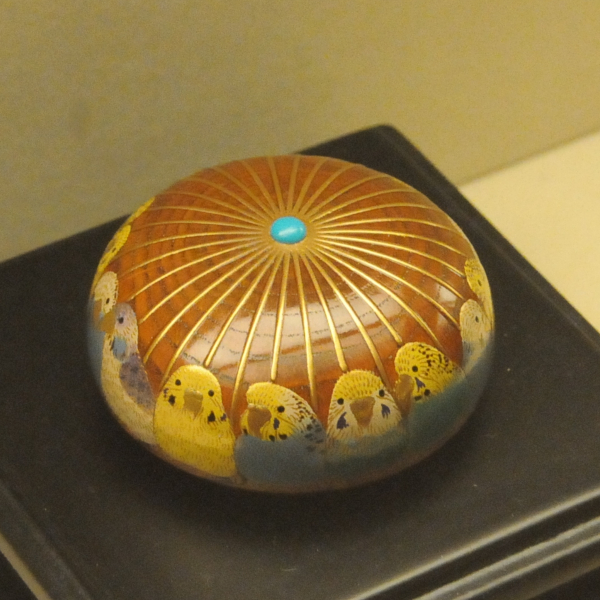This report is posted in conjunction with WiK’s upcoming members-only guided tour of the museum on Sept 26.
********************

Just opposite the eastern entrance of Mibudera, famous for its Mibu kyogen, lies the Kyoto Netsuke Museum. Established in 2007 by an avid collector, it is the only dedicated netsuke museum in Japan and houses more than 5000 pieces, the largest collection of netsuke worldwide.
Netsuke are little carved objects ranging from the size of a walnut to that of a ping-pong ball. Originally purely functional, they were intended to prevent losing things like inro (medicine containers) or yatate (tobacco pouches) that were tied to a man’s obi. A cord was fastened to the pouch, with the netsuke on the other end, and then the pouch was hung onto the obi with the netsuke as a kind of button to prevent it slipping.
It is said that Tokugawa Ieyasu used netsuke when out and about, and over time, with the rise of the merchant class in the Edo period, the little carvings became a fashionable status symbol for men akin to expensive watches today.
Since everybody could make and wear netsuke, they were often used to convey the wearer’s personal tastes. Zodiac symbols and other animals were a favourite, as well as carvings inspired by folklore, ancient tales or Buddhist teachings. Human figures were also popular; some carvings lampooned foreigners, and for the especially daring, nude females were produced.

As mentioned above, the museum currently holds more than 5000 netsuke. About 10% are antiques from the Edo period, but since one of the museum’s missions is to pass on the art to the future, pieces by modern artists have been collected as well. While traditionally ivory and wood were used for netsuke, modern carvers employ all kinds of material, including synthetic resins.
Every month, the Netsuke Museum has a special exhibition that focuses on a specific theme or a particular (contemporary) artist. While the carvings can be enjoyed purely for their artistic merit, those with a greater knowledge of Japanese culture will find allusions to stories, history, or even individual figures, which will make a visit even more satisfying.
Another point of interest: this is not merely the only museum in all of Japan with a focus on netsuke, but it is moreover housed in the only remaining samurai residence left in Kyoto. The building is believed to have been built in 1820 for the Kanzaki family, who were one of the Mibu Goshi warriors who became farmers in the Edo period. It has been lovingly restored and is now a tangible cultural property of Kyoto City. So even if you tire of the netsuke, you can always turn your attention to the building!
For more information, see the website of the Netsuke Museum
https://www.netsukekan.jp/en/
and check out the photos on their instagram
https://www.instagram.com/netsuke_museum/


